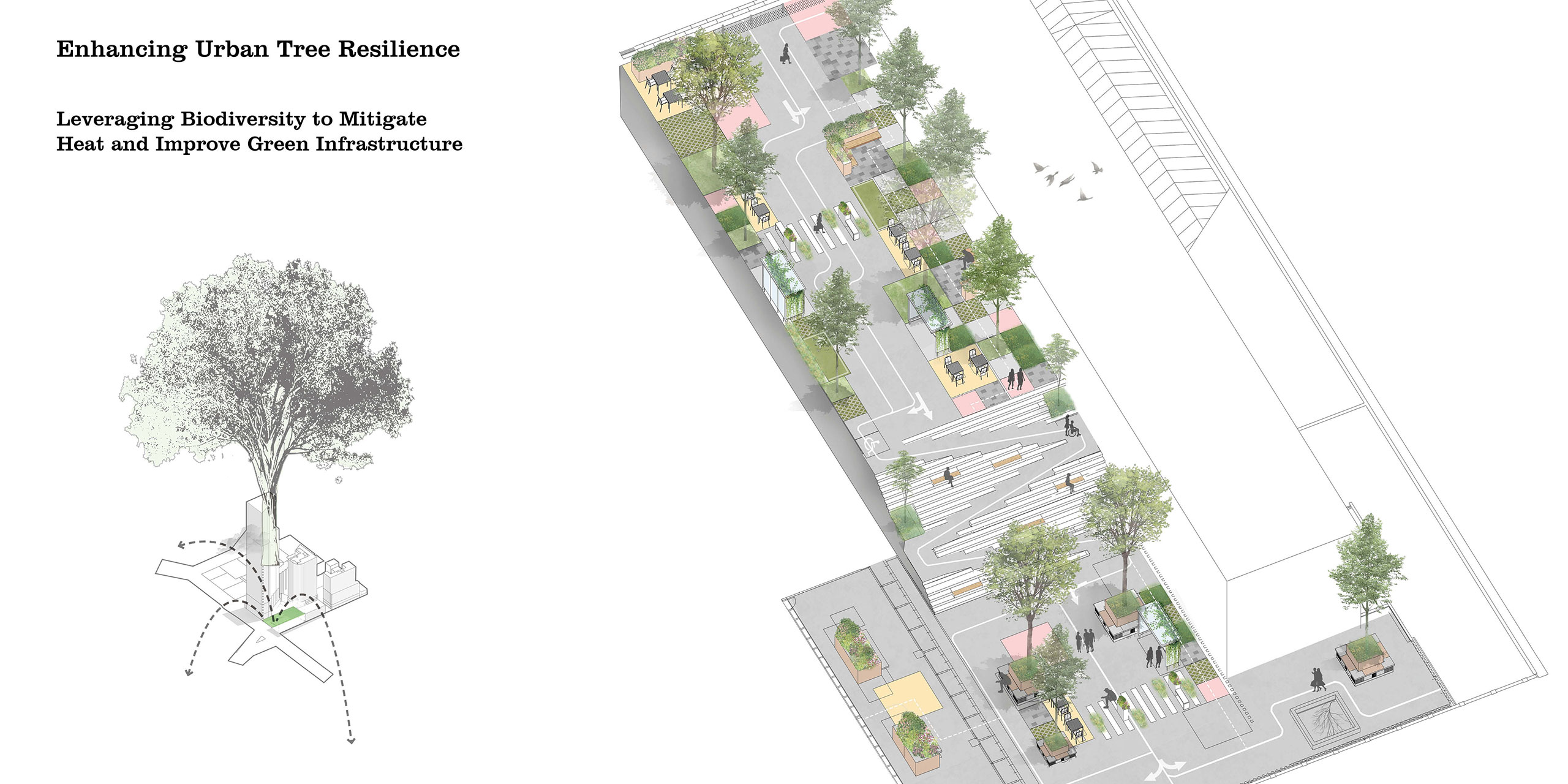The design process began with a system-based analysis of tree vulnerability, CO₂ emissions, and urban heat in Melbourne’s CBD. Using tools like Grasshopper and GIS, I mapped species distribution, traffic flow, and sun exposure to identify areas of concern. From this, a feedback loop model was developed, showing how biodiversity loss and heat stress reinforce each other.
To respond, I built an iteration matrix evaluating tree species based on crown size, heat tolerance, and suitability for different street conditions. These findings were applied to the RMIT courtyard, selected as a real-world test site due to its underutilized space and low canopy cover.
The design introduced a diverse mix of tree species planted at sapling and mature stages to assess long-term viability. Integrated seating, pathways, and interactive planting areas were added to increase accessibility and public engagement. This approach not only met the brief by proposing a resilient greening strategy—it exceeded it by creating a replicable model for other urban sites, turning a passive courtyard into an active testing ground for future urban forest planning.

